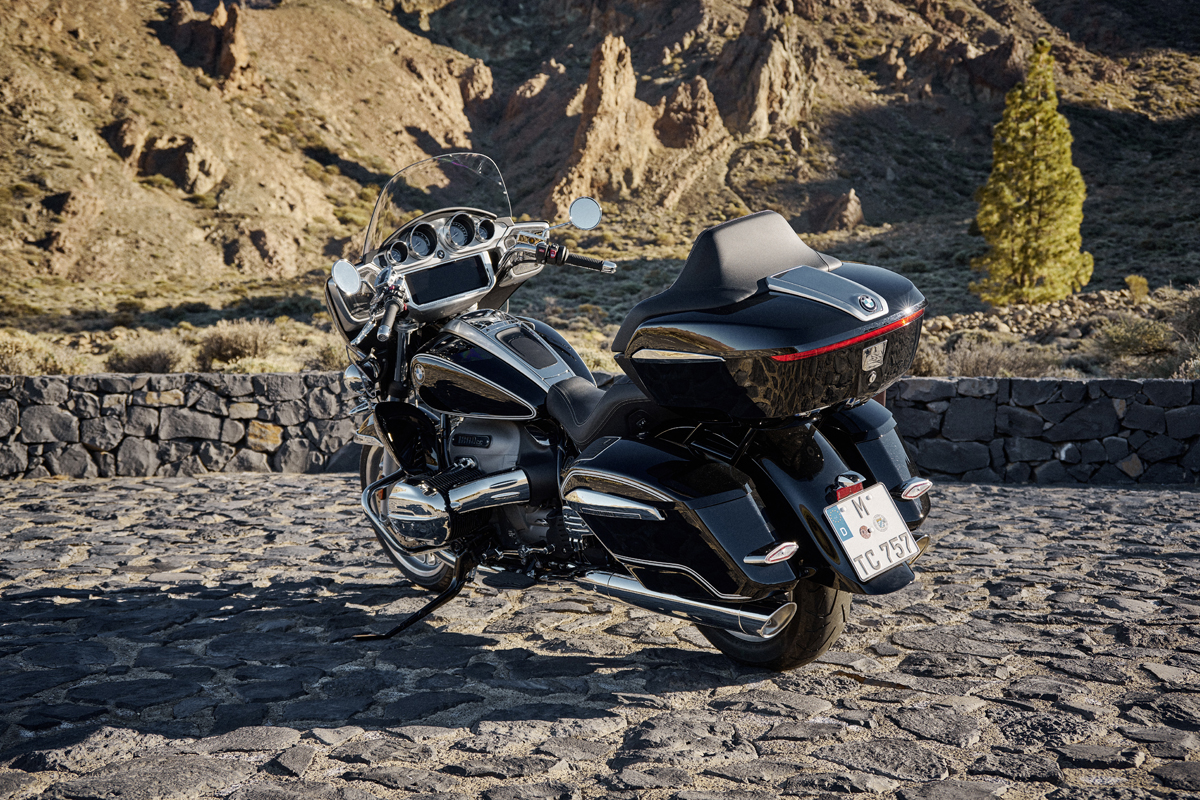
In April 2022 my wife and I bid farewell to the Johannesburg home we loved for 34 years. We raised a family, planted trees and flowers and grapevines, kept chickens and dogs and cats, spent summers in the backyard oasis, braaied and partied in the thatched lapa, drank cocktails in the pool and welcomed myriad visitors. We wept unashamedly as we locked the empty, echoing house, handed the keys to the estate agent and drove away down Fairfield Road for the last time. It was a bittersweet moment. In 34 years the character of The Hill had changed for the worse. A once pristine middle-class suburb was almost unrecognisable. Unkempt pavements, decaying overcrowded houses, potholed roads, heaps of garbage on every street corner and litter everywhere. We could not endure the filth and neglect of Joburg anymore.
We bought a beautiful home in Nelspruit and traded squalor for paradise. One year later I consider myself to be a native of the magical land we used to call ET, the Eastern Transvaal, back in the days when there were only four provinces instead of nine. The best biking roads in the country are on my doorstep and it’s been a thrill to get reacquainted with these ribbons of serpentine tarmac that traverse landscapes of astonishing loveliness.
There’s a very active Lowveld biking community and I’ve been fortunate to make many new biking friends. The local guys know every inch of the road and are keen to share their knowledge. The two big motorcycle dealers are Freedom Motorcycles which sells Harleys and Eastview Motorrad the BMW dealer. The BMW guys have an extensive demo fleet. Shaun Brown, Motorrad Dealer Principal, and Allan Brown, Ace Salesman, extended a standing invitation to ride any of the bikes in the fleet. On a Friday afternoon, I pitched up at Eastview and collected an R18 Transcontinental resplendent in Galaxy Dust paint and acres of chrome. Time to ride!
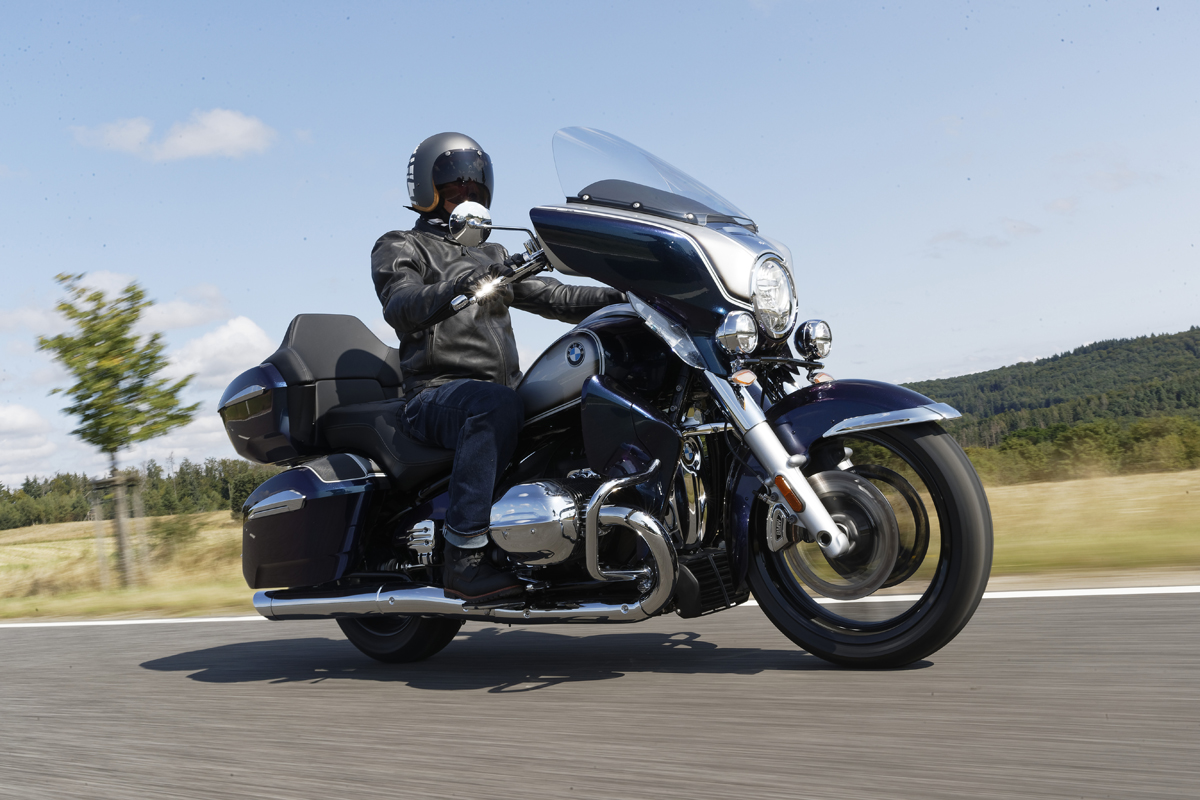
On the way home from Eastview Motorrad I got to grips with the dimensions and weight of the biggest R18. Full of fuel the Transcontinental weighs 427 kg! I know of only one heavier motorcycle, the Harley Road Glide LTD which weighs 437 kg. Add my 90 kg to the equation and that’s a rolling mass of more than half a ton. The Transcontinental is a big boy, the mammoth of the motorways, the behemoth of the boulevards, the humungous of the highways, and the colossus of the country roads.
At slow speeds, threading my way through traffic, it took a few kilometres to become accustomed to the bulk of the bike and thereafter it was plain sailing. Let’s be clear, the Transcontinental is a bike destined for the open road. Sure you can ride it around town and cruise to your local watering hole to impress your maats but that’s not what the bike was designed to do. Over a 600 km weekend of riding, I discovered the strength and beauty of the Transcontinental as it shrugged off its mass and lived up to its name. This is a bike intended for one purpose, to demolish long distances as you traverse vast landscapes in style, safety and comfort. The intent of this story is not to present an in-depth review of the Transcontinental’s features and capabilities. Other ZA Bikers journalists have already written their impressions of the bike. You’ll find their articles here, Dave Cilliers and Harry Fisher.
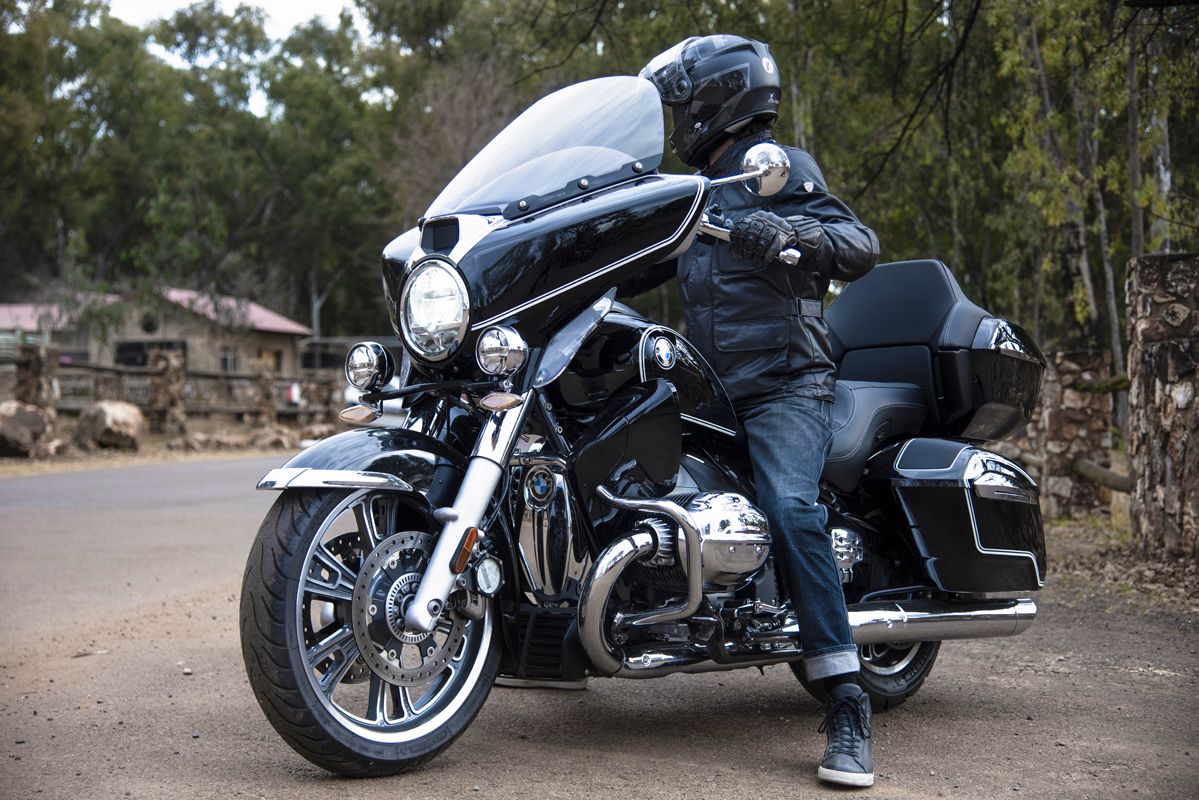
I rode at 08:00 on a glorious warm Lowveld morning, the air crystalline after the storms in the night. I followed the R40 south from Nelspruit to Barberton, 50 km of exquisite blacktop characterised by full-tilt sweeping corners and punctuated by the tricky Hilltop Pass. Hilltop has been the ruin of many a poor boy because of its off-camber hairpins and diminishing radius corners. I know the pass well and stuffed the R18 into the corners enjoying the auditory and tactile sensations as I ground the hero blobs off the hinged footboards. On the straights I experimented with cruise control and for much of the day, where conditions allowed, I relaxed in the saddle as the R18 cruised at 160 km/h with the 1802 cm3 air-cooled boxer twin ticking over at a leisurely 3600 rpm.
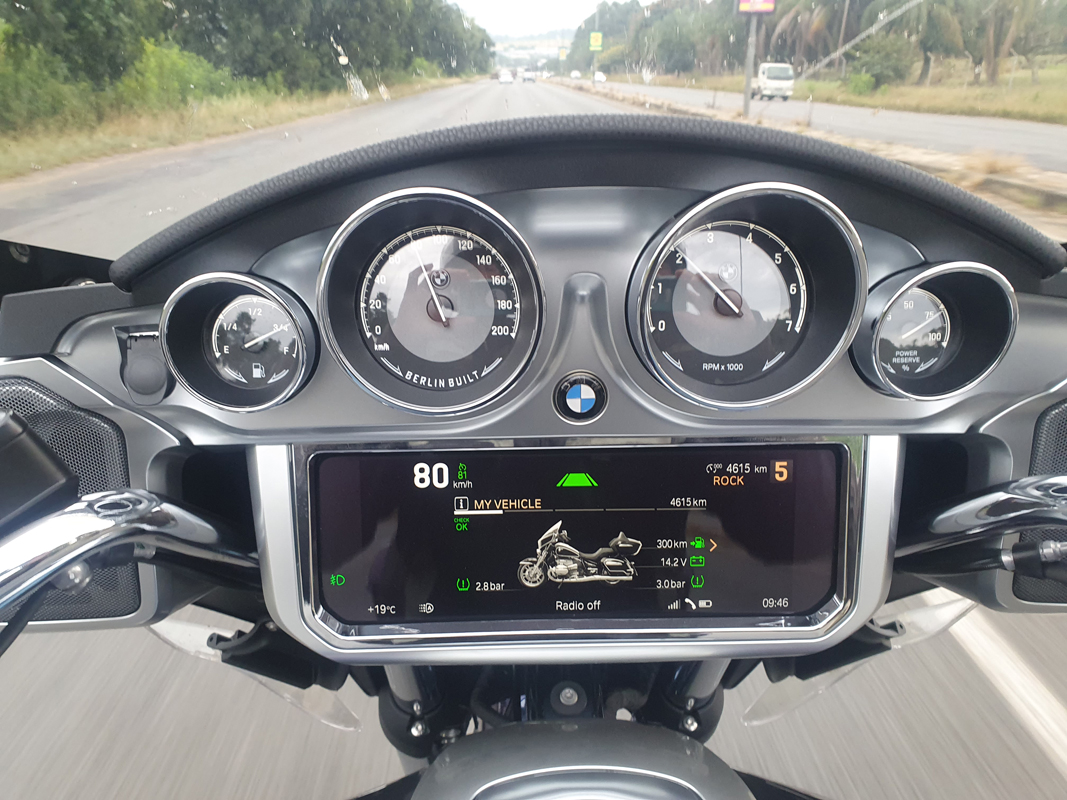
On the outskirts of Barberton, there was a kilometre-long avenue of Kapok trees in riotous cerise full bloom, an amazing neon swatch of colour in an otherwise green landscape. I continued on the R40, the Bulembu Pass, heading for Josefsdal, the border post between South Africa and Eswatini. This 40 km long road is the world-famous Geotrail. The oldest exposed rocks on planet Earth, rocks formed 3.5 to 3.2 billion years ago are found along the road as it winds steeply into the Makhonjwa mountain fastnesses.
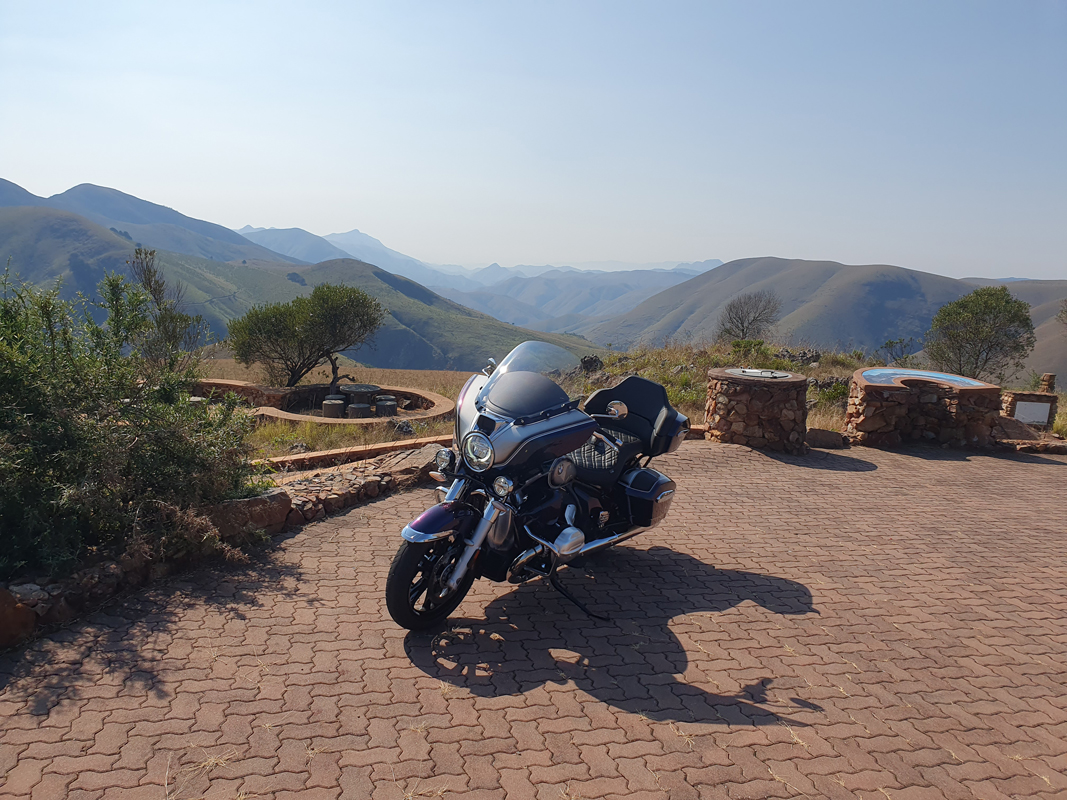
The road is generally in excellent condition because it carries so little traffic, though there are a few wash-aways caused by the summer storms. It’s well worth stopping at the viewpoints. The panoramas to the east are breathtaking. Serried ranks of mountains fade to the distant horizons in shades of lilac and grey.
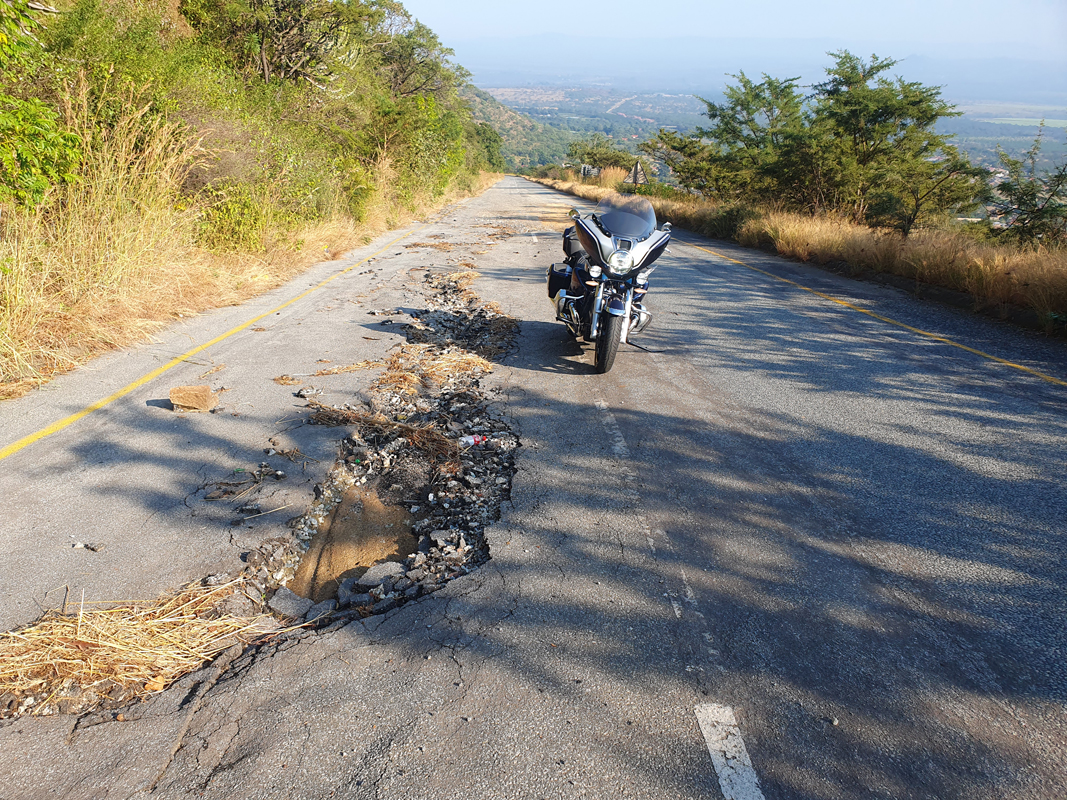
Another unique feature of the road is that it parallels the remains of the Bulembu to Barberton cableway. When the 20.36-kilometre cableway was constructed in 1938 it was the longest in the world. It was supported by 52 pylons, with the longest unsupported span of 1207 metres and the highest point above the ground 189 metres. The cableway was built to bring asbestos from the Havelock mine to the Barberton railway station and to transport coal on the returning cocopans to the Bulembu power station. Many of the cableway pylons are still standing, wonderful examples of steampunk engineering from a bygone era.
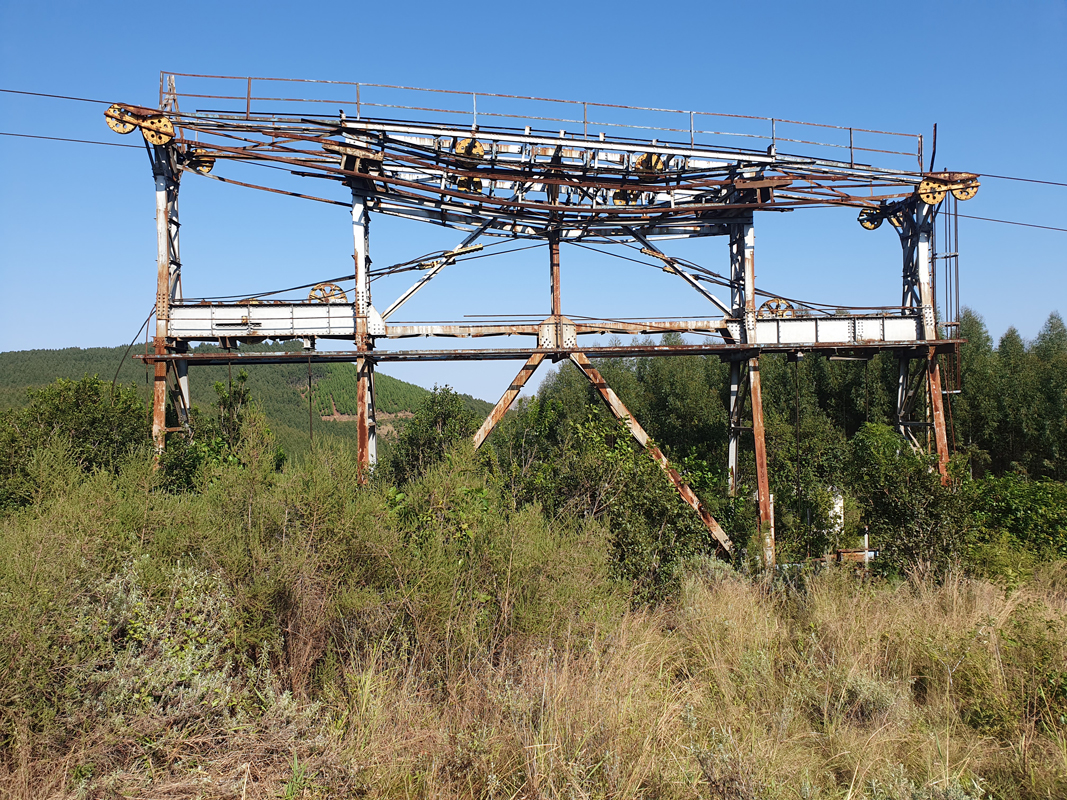
The upper reaches of the road are hemmed in by Sappi plantations of pine and eucalyptus. When I stopped to take photos of one of the abandoned pylons the hills echoed with the two-stroke howl of chainsaws as lumberjacks clearcut entire hillsides. Dozens of cattle were grazing the roadsides on the last few kilometres before the border and the road was splattered with hundreds of fresh cow pats, slippery and aromatic and to be avoided no matter what. I did a U-turn at the border post and headed back down the mountain. Add the Geotrail to your bucket list. It’s an undiscovered gem.
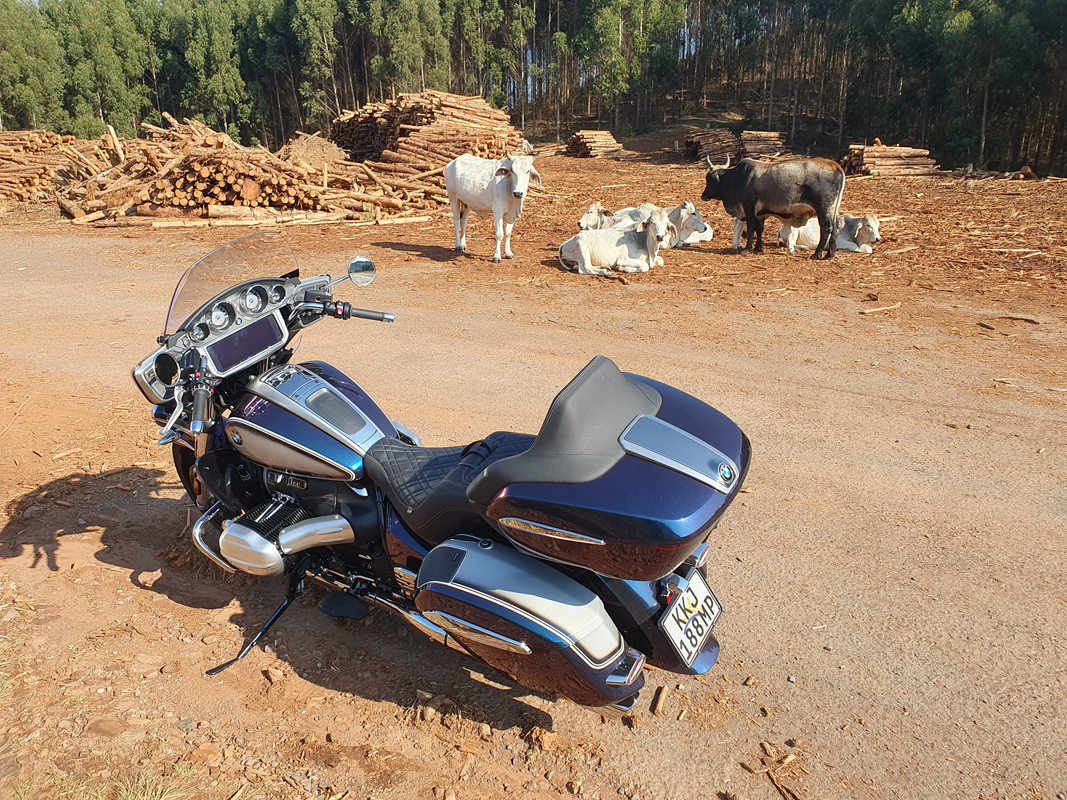
At the foot of the mountain, I hooked east on the R38 to Kaapmuiden. The R38 runs for 60 km through the valley of the Kaap River. The terrain is a tapestry of bushveld interspersed with swathes of irrigated fields of sugarcane and subtropical orchards. There wasn’t much traffic and short before long I stopped in Kaapmuiden at The National Park Butchery, established in 1983, to buy biltong and droëwors. Best meat in the Lowveld? Head for Kaapmuiden.
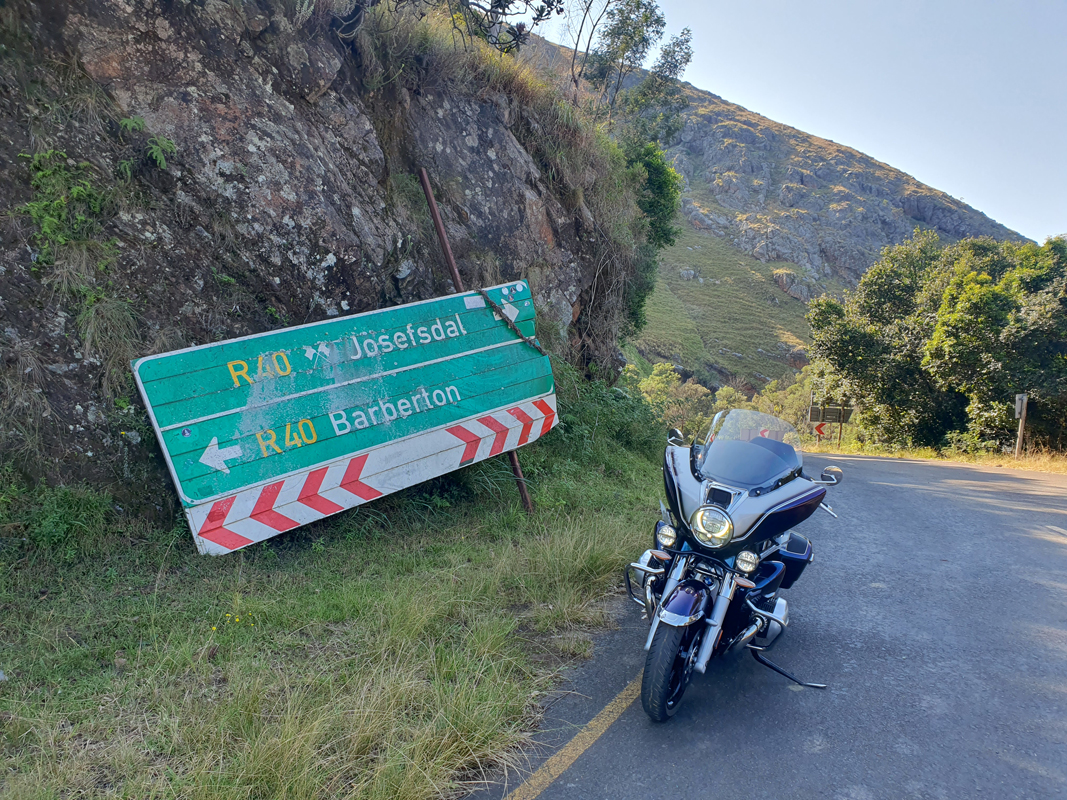
I rode back towards Nelspruit on the N4 through the Crocodile River gorge. It’s a spectacular ride between towering mountains that loom above the river and the road. The downside is the N4 is infested by 26 and 34-wheel interlink juggernauts carrying loads of coal and ore to Maputo. Of course, these loads should all be on freight trains but, no thanks to the so-called minister of transport, the railways have ceased to function in any meaningful way. To avoid central Nelspruit I took a backroad past the University of Mpumalanga and joined the R40 at Rocky’s Drift. Traffic was backed up for kilometres in both directions because the Lowveld intelligentsia, aka the Mbombela Traffic Department, had put up roadblocks at midday on Saturday to promote irritation and enmity among motorists through sheer stupidity and kragdadigheid. Of course, I filtered to the front of the queue and sped away pretending not to notice the twerp who attempted to flag me down.
I refuelled at the Sasol garage just before White River and turned left onto one of my favourite roads in all the land. The R537 to Sabie is in good condition, 45 km of fast-flowing sweepers through wonderful Lowveld scenery, plantations and orchards and bushveld dotted with lakes that reflect the indigo sky bowl. The R18 was in its element hauling along effortlessly at between 160 and 180 km/h. Twenty minutes after leaving White River I stopped at the T junction with the R536, the start of the legendary ET racer road, the 22.
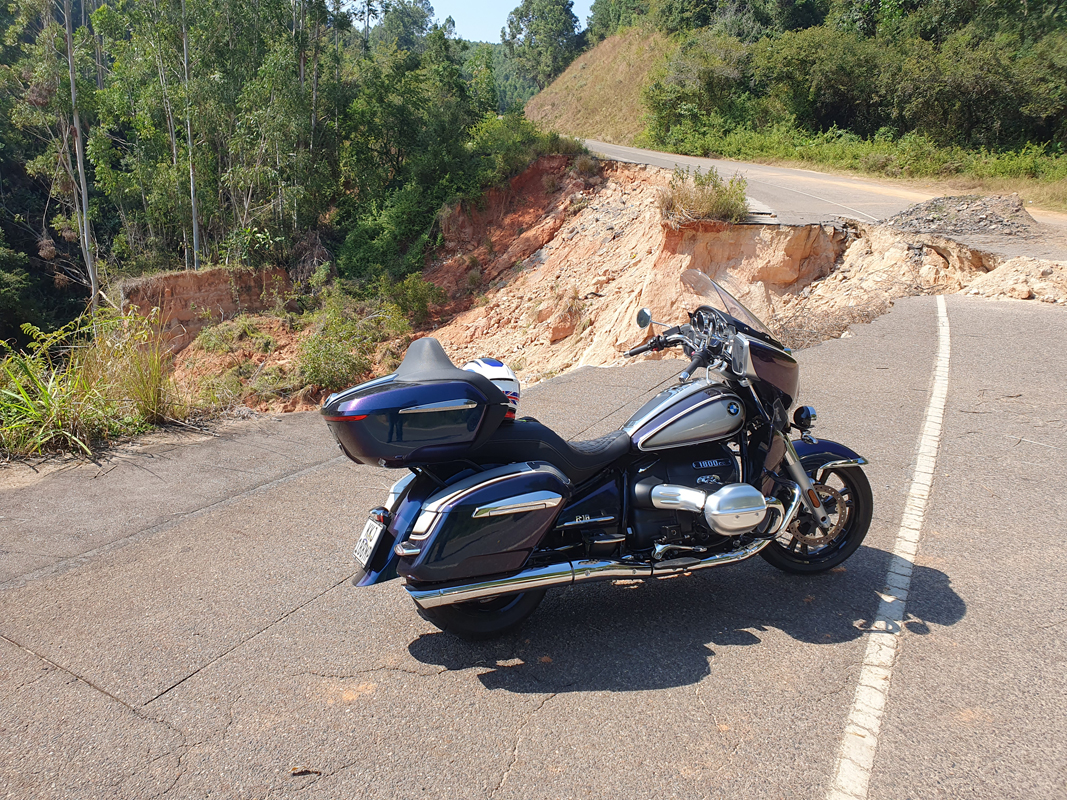
The R536 used to connect Sabie and Hazyview but months previously a section of the road was washed away in a storm and I had been warned the road to Hazyview was impassable. Naturally, I was keen to have a look for myself. Once again I had the opportunity to abuse the R18’s hero blobs as I bombed along the 22. I’d be lying if I said the Transcontinental was in its natural habitat. It wasn’t but it was still fun to ride.
After 20 km I arrived at the point where the road had collapsed. Ninety per cent of the road was in the valley below and I reckon that road is going to be impassable for years. There’s still a narrow strip, less than a metre wide, where a bike can cross but I had no desire to pull Murphy’s beard. Go check it out for yourself and ride the 22 as fast as you can, safe in the knowledge that there’s zero traffic on the road. I took photos, turned around and rode back to Sabie. I would have stopped at The Woodsman for a drink but there were no other bikes parked outside so I continued straight on through Sabie and picked up the R532 to Graskop.
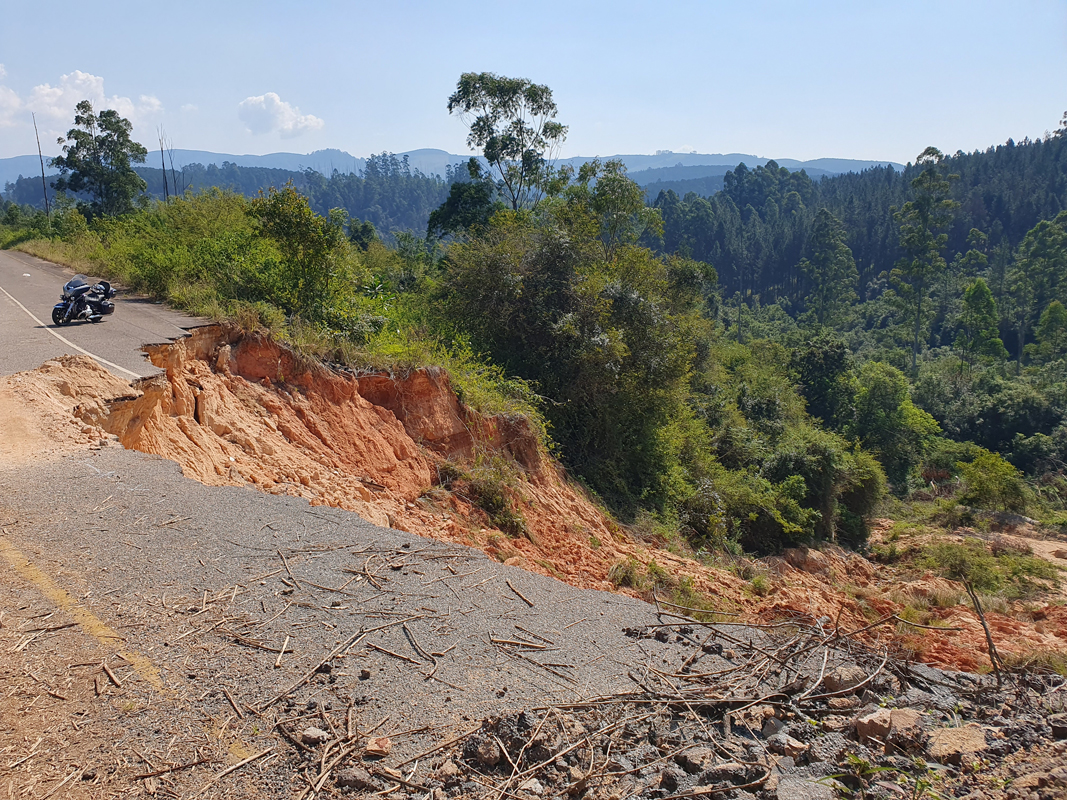
Sabie to Graskop is yet another splendid ET road, 30 km of high-speed bad craziness spiced with acute angle corners in the vicinity of Mac Mac Falls. Those corners have given many unwary fellows very big eyes and I left my mark on them as the uneven road surface battered the footboards under my feet. In Graskop I stopped in the main drag at Riders’ Rest, the best bikers’ boozer in ET. My mate Shannon has owned the pub for many years. We had a swift drink together and then I was on my way. I still had a long circuitous route to ride to get back to Nelspruit.
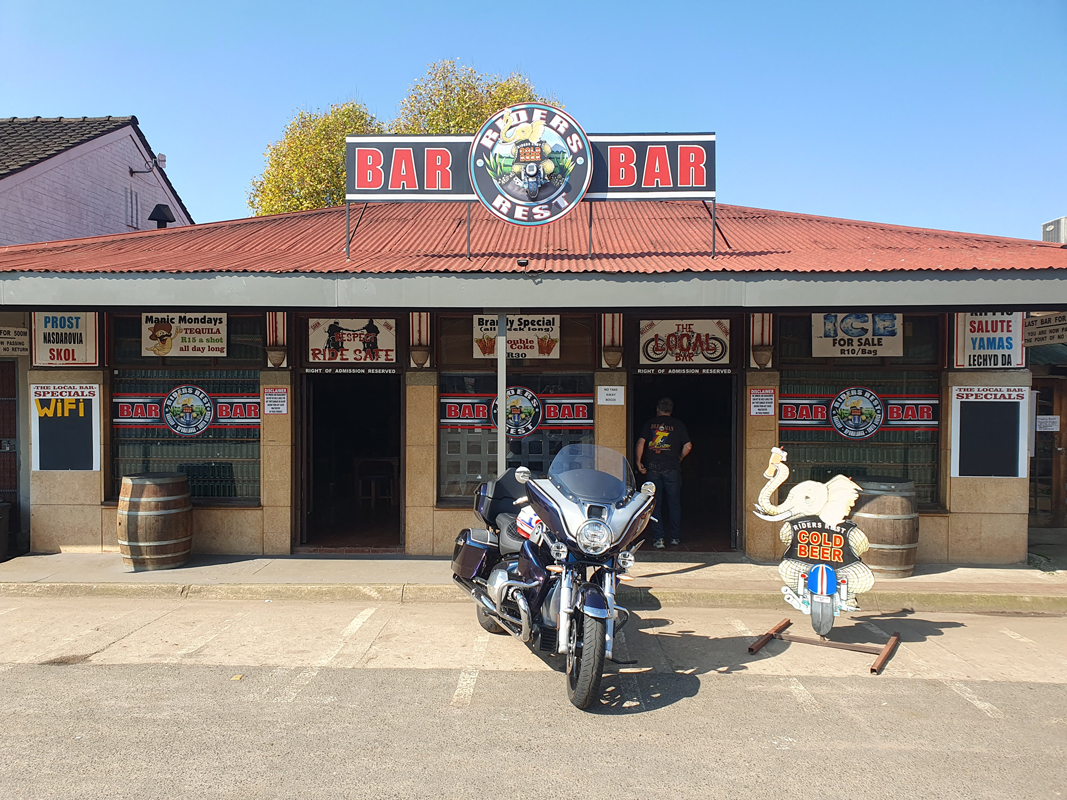
I love the narrow tortuous road over the mountains to Pilgrim’s Rest. It’s bumpy and gnarly but it’s a road that takes you back in time. I always try to picture the first prospectors who clambered over those mountains in a quest for elusive gold and who finally found their dreams in the streams around the town. After years of neglect and mismanagement by the Mpumalanga provincial government, there is life in this quaint historic hamlet with its corrugated iron shops and houses and the beautifully preserved Royal Hotel. But I doubt it will ever recover to its glory days when tour buses packed with overseas visitors used to arrive in droves.
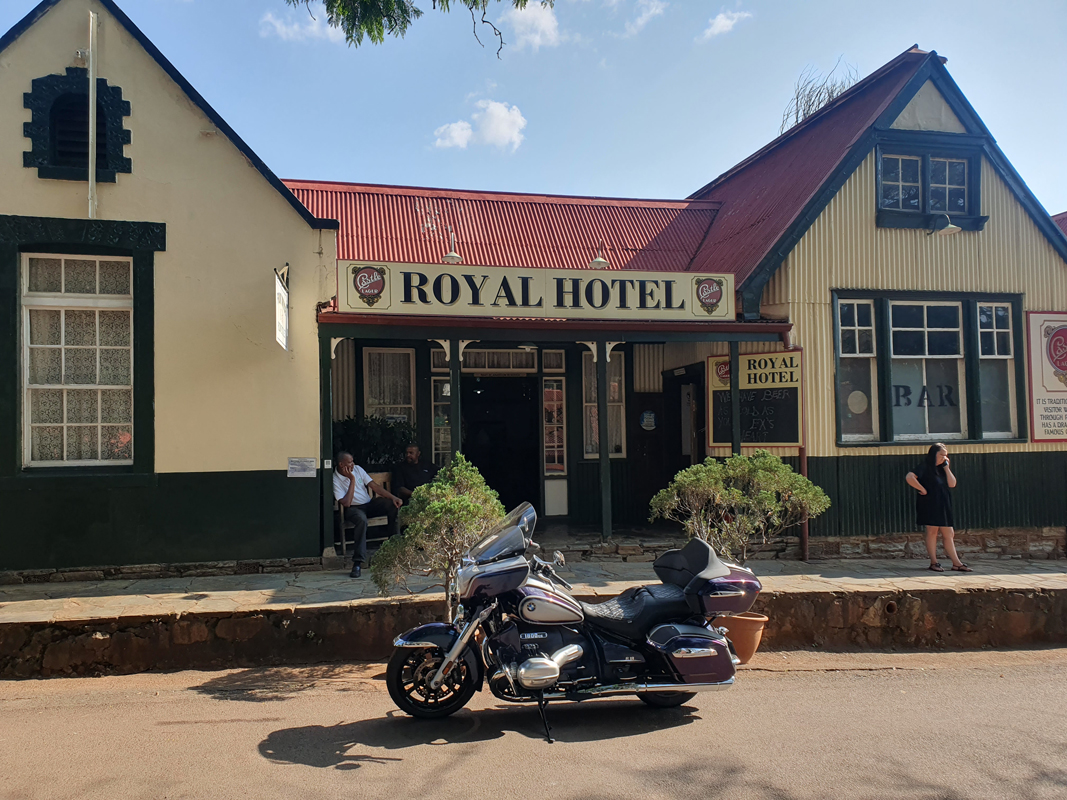
I have many happy memories of Pilgrim’s Rest. The caravan park was the venue for the Staffie Rally for many years. I rode to the caravan park on the banks of the Blyde River and stopped in disbelief at the gate. Every building was a ruin, the corrugated iron roofs stolen, plumbing and electricity ripped from the walls, rank forests of khakibos growing in the wreckage and on the once immaculate lawns. It was horrible, a poignant symbol of the devastation that has been wrought on this beloved country.
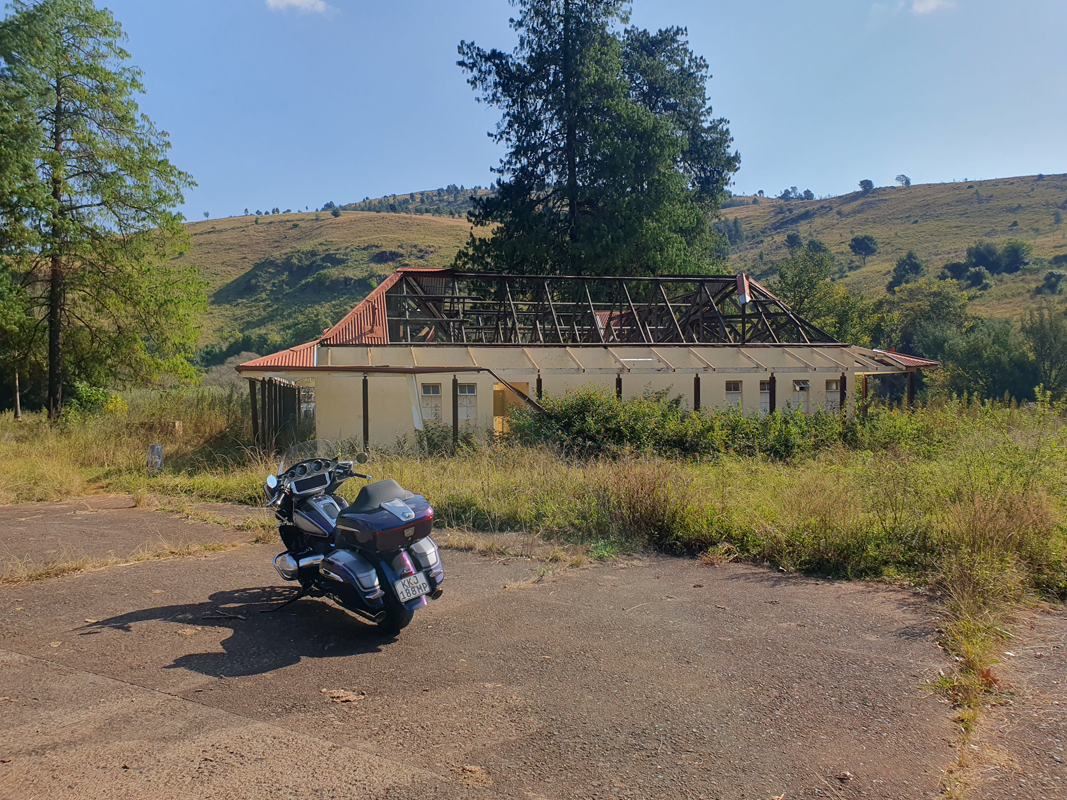
At its highest point, the altitude of Robbers Pass is 1789 metres, more than 500 metres higher than Pilgrim’s Rest. The ascent from the Lowveld to the Highveld is marked by a distinct change in vegetation. The slopes of Robbers Pass are golden grasslands that stretch to the far horizons where the line between earth and sky becomes blurred and indistinct. Robbers is a 21 km long pass with 68 corners many of which take unwary riders by surprise. There’s an old saying; “Robbers never sleeps. It waits!”
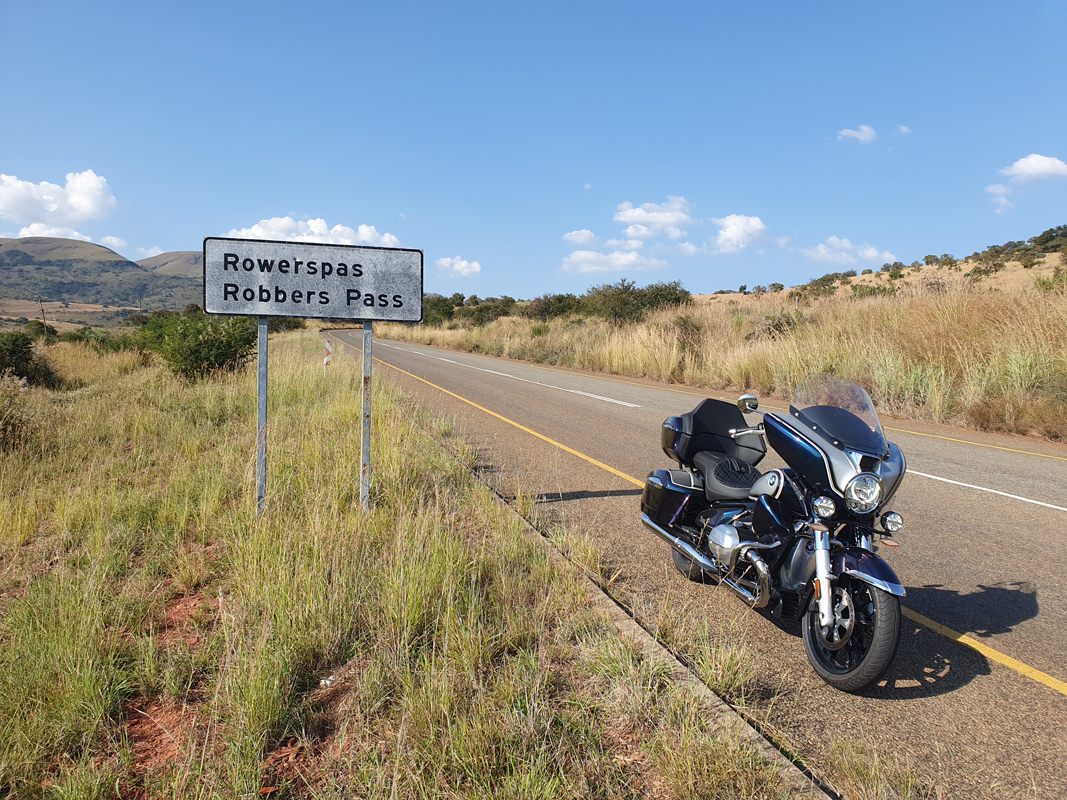
From the western end of the pass, the road runs across the sun-kissed savannah until it intersects the R36. I rode southwest to Lydenburg and after 30 km arrived in one of the more godforsaken towns in this benighted country. The main road through Lydenburg is a shambles that almost beggars belief. It’s a dirt track that has allegedly been under construction for the last four years. It’s a free for all out there as vehicles compete to occupy the least rutted paths.
There is no evidence of any work taking place and it wouldn’t surprise me to learn that the contractor who was paid for the work just buggered off with the money. It’s pathetic. It’s the predictable result of handing the “management” of multimillion-Rand municipal budgets to idiots. Once beautiful Lydenburg is a filthy squalid dump. There are many people who welcomed the name change from Lydenburg to Mashishing. The people who built Lydenburg would be ashamed to have their names associated with the slum this town has become.
I ascended the western slopes of Long Tom Pass in the warm late afternoon sunshine. Long Tom is probably the most iconic pass in Mpumalanga and never fails to delight. It’s a beautiful high altitude road with the highest point of 2150 metres, a road of many moods and many aspects. It traverses wild rugged terrain, rolling grasslands, wooded hillsides and the great Drakensberg escarpment. On the precipitous slopes of the escarpment between Hops Hollow Brewery and Misty Mountain Lodge the road winds through multiple steep hairpin bends before sloping more gently down to the Lowveld. It doesn’t matter how many times you’ve ridden Long Tom. It’s always a thrill and a challenge.
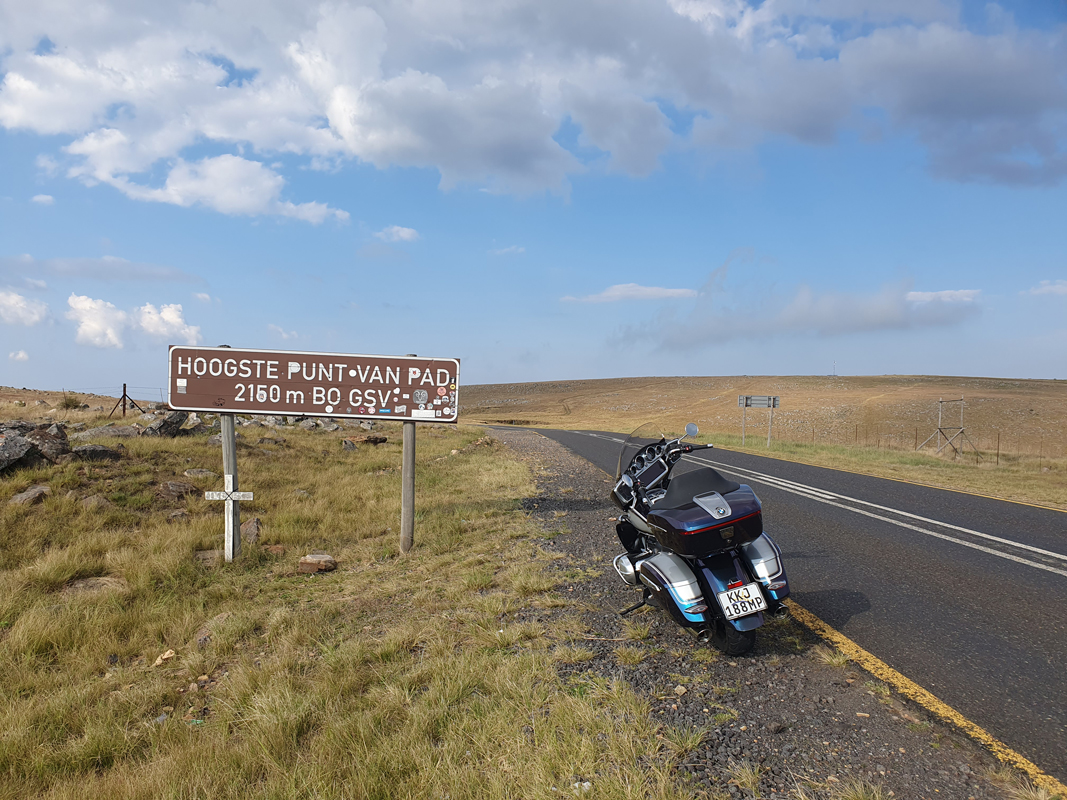
Before the descent into Sabie, I hooked south onto the R37 for the final sprint of the day into Nelspruit. This is yet another lovely road that beckons faster, faster. I rode at speed through a bucolic agrarian landscape of macadamia, citrus and mango groves. At dusk, I pulled into my driveway. It had been a perfect day in the saddle. 530 km of some of the finest biking roads in the country. The Transcontinental performed flawlessly and I arrived home feeling strong and fresh.
When my wife June first laid eyes on the Transcontinental she immediately said “Oooh, I’m going to enjoy a ride on that pillion seat.” I knew exactly where we would ride on Sunday morning, my favourite route, the road to Kaapschehoop and back. It’s 30 km from Nelspruit to Kaapschehoop, a village that time forgot on the edge of the Drakensberg escarpment. It’s a brilliant ride across the flatlands that fringe Nelspruit before the heady climb up the slopes of the Berg. Prominent signs warn motorists and riders to look out for the herds of wild horses that roam the mountains and occasionally venture into the village.
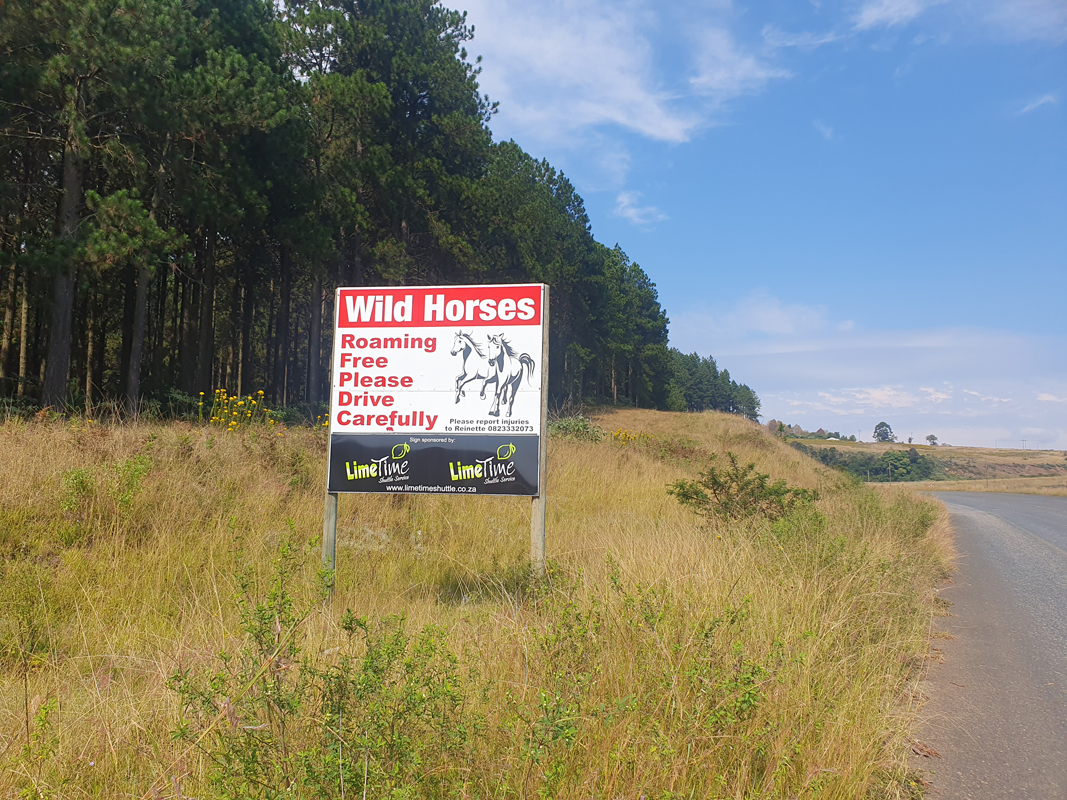
Nelspruit is 770 m above sea level. Kaapschehoop is 1640 m above sea level. It’s always about 5°C cooler at the top of the mountain, a completely different climatic zone. The village is home to excellent bars and restaurants including Bohemian Groove Café, Salvador, and my favourite Die Nagkantoor owned by De Wet Potgieter. De Wet was a journalist at the Sunday Times and Rapport and editor of The Lowvelder before he opened his boozer in Kaapschehoop. The walls of Die Nagkantoor are covered with newspaper clippings from the ‘70s and ‘80s, stark reminders of the troubled history of this fair land. Behind the bar, there’s a larger-than-life photo of PW Botha, Die Groot Krokodil, an irresistible backdrop for a photo. June and I each had a drink, spoke a lot of twak with De Wet and hauled back down the mountain for our lunchtime braai.
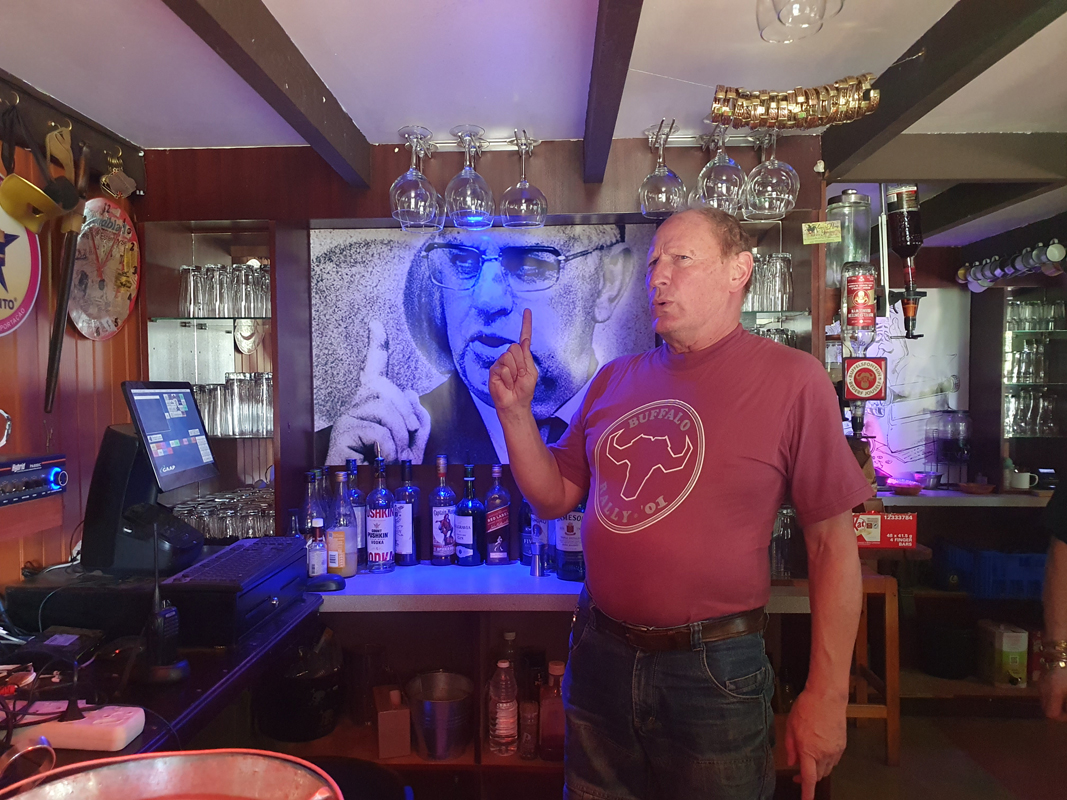
The Transcontinental was an excellent steed on which to explore Mpumalanga. You need to come and ride here too. The weather is warm, the people are friendly, the bars and restaurants are outstanding and, most importantly, you’ll enjoy hundreds of kilometres of the best riding in the country. See you on the road.
